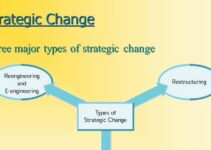Businesses and organizations practice various types of strategies and models while implementing the organizational change program. The reasons, causes, and requirements for change are different for various organizations, and so does their strategies and methodologies. Today, what is ADKAR in change management; how to implement it for organizational change, and its advantages and disadvantages?
What is ADKAR Model?
The ADKAR model is a result-focused change management practice that focuses on decreasing the resistance level among employees during organizational change. The founder of Prosci Jeffrey Hiatt developed the ADKAR model, and it follows the methodology of Prosci change management. However, the acronym of ADKAR comprises five key elements, and they’re as follows;
- Awareness
- Desire
- Knowledge
- Ability
- Reinforcement
In the ADKAR model, the focus of the awareness and desire stage is to get people out of the existing stage; where you realize the scope of change but haven’t started yet. Knowledge and ability stages happen during the transition phase; the focus of reinforcement is on the future.
Implementing ADKAR Model for Organizational Change
Businesses and organizations employ the ADKAR model to support the change program and set their goals and objectives. Every member of the organization involved in the change has to meet certain types of goals and objectives. They reach their destinations, goals, and objectives at different times. However, some of the main steps in implementing the ADKAR model for organizational change are as follows;
Spreading Awareness about Change
The first step is spreading awareness about the change initiative. It is much more than just making employees aware of the change; t is significant that you should not only comprehend and rightly interpret the meaning of change. But they should also agree with the reason and justification of the change initiative. It is important that you should offer them a proper explanation that why you need to implement the change.
For instance, if you want to launch Microsoft Sharepoint in your organization, then you should explain to them first the significance of work-from-home and traveling of employees. MS Sharepoint would help them to access the company’s data, and documents, and connect with the official team remotely. The application has the solution for all types of problems.
After discussing the whole plan of the change program, you should motivate them to frankly ask questions about the change program and how you are going to implement it.
Creating Desire To Make The Change
If employees understand the significance and scope of change, then it won’t mean that they would actually accept the change. if you want them to embrace the change, then they should have a desire for it, and fortunately, you can develop desire in them.
First of all, you should appoint a change leader. He would not only facilitate and support the change program but also connect with the employees. You should select such a change leader that can relate to the employees and their daily routine activities; so that he could offer them support and guidelines.
In order to create desire in them, you should clearly explain to them the benefits of the change program and how it would impact them; what’s in it for them. While developing desire in them, you would face the problem of employee resistance to change. It is normal for them to resist change because they don’t have the skills and expertise to adapt to the change. However, it makes them fearful that they would lose their job or it would impact their job. Once you know the reason for resistance, then you can make the change and make adjustments to your plan.
Offering Knowledge & Expertise To Act
It is the stage where you offer training, knowledge, and education to your employees during the change initiative. Employees should know how the change program would impact their roles, responsibilities, processes, tools, and jobs. Every member of the organization should meet their individual goals and objectives.
For instance, if you are launching new software in the organization, then it is the responsibility of the IT department to offer training and set everything up. The focus of the other departments should be on learning the new software. The knowledge and expertise they require to perform the specific would be different because they’re performing different roles, but the change is the same throughout the organization.
As a change leader, you should create a list of additional skills and knowledge that various roles in your organization needs. It would help you to schedule various activities around skill development. If you are bringing a lot of changes at once in your organization, then it would cause resistance among employees.
Some of the top employees training programs that you can launch in your organization are as follows;
- Traditional classroom training programs
- Interactive skill-guided learning programs
- Serial blogs
- Video tutorial
- Mentoring and job shadowing
Confirming Employee’s Capabilities
Employees should have trust and confidence in their skills and expertise so that they can bring changes on their own. For instance, baseball fans are aware of the techniques and methods of throwing the curveball, but only a few of them could make a perfect pitcher.
In order to reduce the gap between their capabilities and knowledge, you should appoint the change leader to mentor and coach the individual members and teams. The change leaders should gather feedback from various teams and employees and record potential problems. It is important to evaluate their performance and offer them relevant feedback. You should consider executing the change program in various stages for large-scale organizations.
Reinforcing to Change
After implementing the change and launching the new software or system, you should reinforce the change long after executing it the first time. If the team is making progress, then you should celebrate the success during and after the change, so that the team would maintain the excitement level.
- Consider opening a bottle of Champaign after realizing the success of employees
- Let employees share their achievements and accomplishments
If employees are making mistakes, then you should correct their mistakes and flaws privately. If they have performed well in the organization, then you should praise and acknowledge them publically.
Advantages of ADKAR
Some of the key benefits and advantages of the ADKAR model are as follows;
- Focuses on training, support, and explanation; Prosci is the founder company and it provides training programs at an economical price range
- It is a very old model and many organizations have implemented it in their change programs
- Makes companies think outside of the box, they don’t have to reinvent the wheel, rather offers them readymade solutions
- Provides a practical approach and strategy to the change program
Disadvantages of ADKAR
Some of the main disadvantages of the ADKAR model are as follows;
- Only suitable for small changes, and not for large scale changes, and it only focuses on the human side of change initiatives
- Avoid the requirements of those companies that have a long-term vision of implementing the change
Conclusion: What is ADKAR in Change Management? Pros & Cons
After an in-depth study of what is ADKAR in change management; various steps of implementation, and advantages and disadvantages; we have realized that ADKAR is a useful change model. If you are learning about implementing the ADKAR change model, then you should keep in mind the abovementioned guidelines.
Ahsan is an accomplished researcher and has a deep insight in worldly life affairs. He goes Live 3 days a week on various social media platforms. Other than research writing, he’s a very interesting person.


